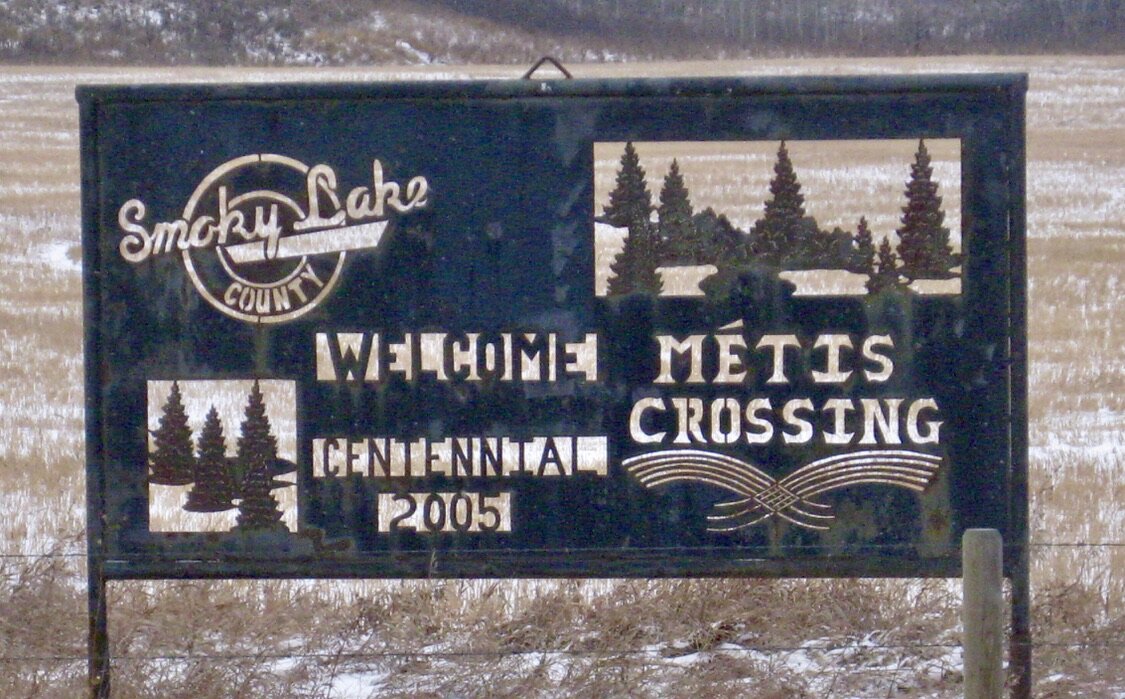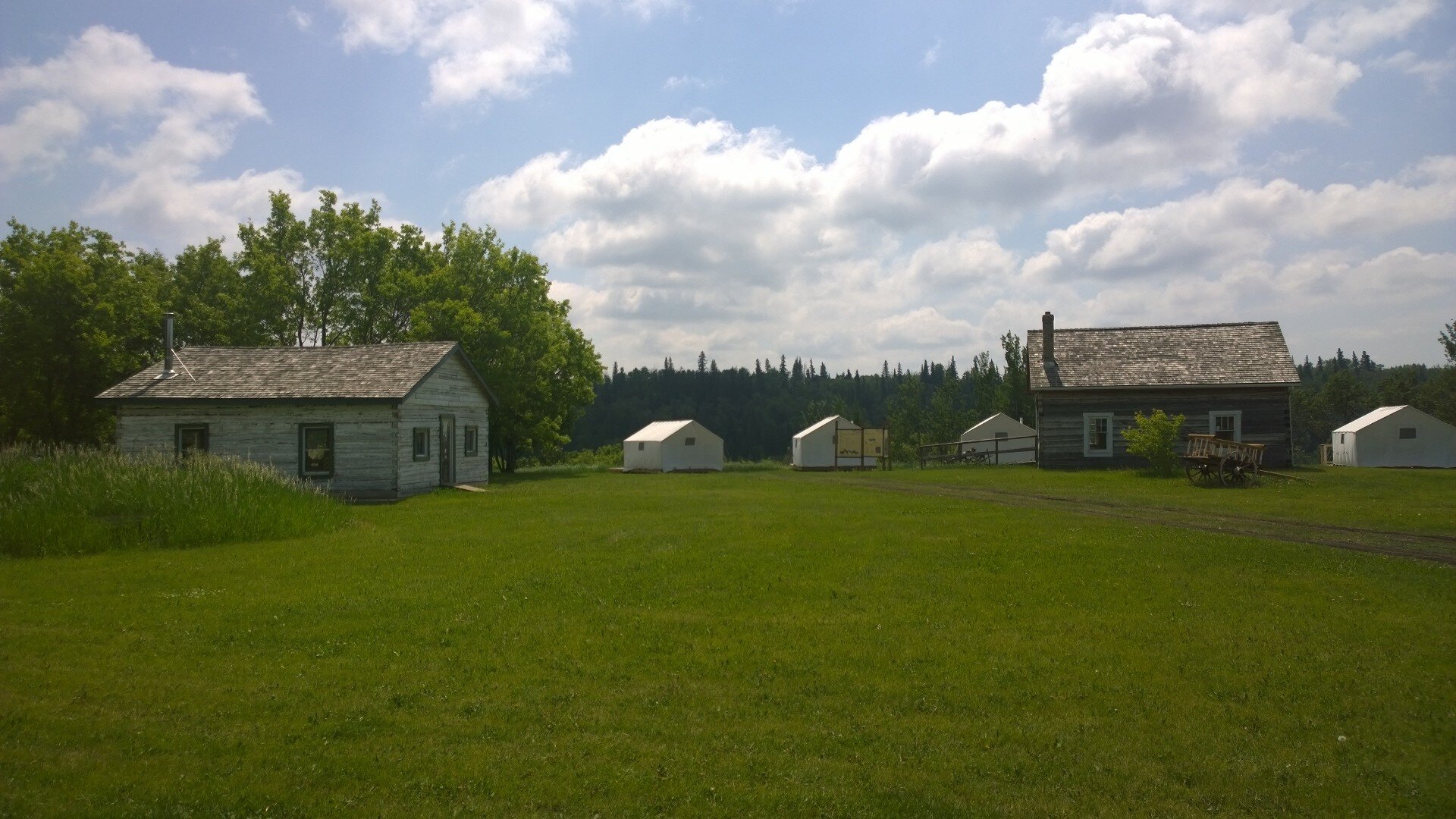Ready to Re-Imagine Your Visitor Plan?
Photo Credit: Mike Mayer
So let’s say you’ve read the Van Matre book, Interpretive Design and the Dance of Experience (IDADE), you are excited about the content and ideas, and are willing to try this approach for visitor planning and interpretive design. However, maybe there are some concerns about how to pull all the pieces in the book together in a coordinated way. Or perhaps you’re wondering if it is possible to implement all the ideas by yourself. Well, we agree there is a lot of information in the book and it can be a daunting task. Frankly, though the book is a game changer in planning and design, at times it needs some interpretation to grasp the meanings and the best way to implement the process.
Our goal over the next few blog posts is to share the process we used during our latest project at Métis Crossing. Hopefully this example will provide some concrete insights into how to implement the ideas, structures, and help clarify the content in IDADE when developing visitor interpretive experiences. Perhaps it will even stimulate some ideas in your planning and design processes or encourage you to contact us if you have questions or comments.
Métis Crossing – Background Information
Photo Credit: Mike Mayer
Métis Crossing is a cultural heritage centre created by the Métis Nation of Alberta, Canada located near Smokey Lake (about 70 miles/114 km northeast of Edmonton). The director wanted to re-imagine what the site could offer beyond the camping and recreational area, several historic buildings and an attractive river front. They were willing to take a chance on a new approach that emphasized experiential interactive invitations as the heart of their interpretive offerings for visitors.
By the time EID was involved in this project, construction on a new Cultural Gathering Centre had begun. This building would be a welcoming point, a place to tell the Métis story, a gathering place for the Métis, an events facility, plus exhibits, classroom space, a gift shop and a café. This would be the first fully designed and operated Métis Cultural Gathering Centre in Alberta. Our work focused on introducing an interpretive design process to the staff so they had a framework to develop and incorporate interpretive programming for visitors.
Photo Credit: Métis Nation of Alberta, Canada/Métis Crossing
But first, let me tell you a story. Imagine you are a people that have lived and prospered for thousands of years in a natural community rich with the gifts of nature. Suddenly people from another part of the earth invade and colonize the land in their image. You are disenfranchised, oppressed, humiliated and forced to give up much of your land and culture. You are barely acknowledged as human or worthy of notice. At times the fear and shame is so great that you to hide your lineage, even from your children, because you fear they too will be the targets of discrimination. You feel hidden in plain sight. Yet despite it all, your culture, stories and language endure and persevere.
Photo Credit: Bill Reynolds
Then one day things begin to change. In the 1980s your country recognizes you as a distinct nation. Within a decade there are new agreements with the federal and provincial governments, lands and rights are restored and reparations are offered. All of a sudden the descendants of the colonists are more aware of the important role your people and culture played in the history of the colonized land – you no longer want to hide in plain sight.
Photo Credit: Mike Mayer
This, in brief, is the story of the Métis People and Culture in Canada. The Métis no longer hide in the shadows and they can proudly proclaim the importance of their culture and contributions to Canada. Métis Crossing is a place where the Métis can tell their story without the filter of provincial, federal or colonist viewpoints. Now imagine a couple of middle-aged non-Métis guys, one from Canada and one from the US, being asked to work on the Métis Crossing project with the Métis Nation. What an honor for EID to be asked and included.
This project had 3 distinct planning phases:
· Expectations & Engaging the Community: Digging into the WHY
· Planning Site Outcomes: Preparing for the Visitors to Arrive –The WHATS, WHO & WHERE
· Planning Visitor Experiences: Getting Folks onto the Interpretive Dance Floor - The WAYS & HOWS
Photo Credit: Métis Nation of Alberta/Métis Crossing
Expectations and Engaging the Community: Digging into the WHY
We approached this project as Interpretive Designers and Planners with a coaching philosophy, not as expert consultants in leisure, education or interpretation. Our view was holistic. We would not write the plan; we would provide the scaffolding. The design process from IDADE helped integrate the mission and visitor outcomes with the buildings, exhibits, paths, workshops and other experiences. Though natural processes played an important role in the natural landscape and Métis life, this project focused on the cultural aspects of the Métis and how best to share their story with all people. It was equally important to deepen cultural ties for the Métis wanting to visit the site.
A four- step method was used when presenting the interpretive process: Model-Practice-Feedback-Revise. This allowed the Métis Crossing staff to create their own planning document. A document that is useful now and in the future.
Setting Expectations
The IDADE book doesn’t address expectations directly, but it is something that EID considers. The importance of clear expectations and communication when working with others is vital. It reduces frustrations and ensures that time will not be wasted pursuing issues that the planner is not responsible for. Our preference is to work closely with the architects, landscape designers, business and media planners, marketers, exhibitors, etc. on the project to ensure interpretive outcomes are integrated and reinforced throughout the visitor experience.
EID likes to determine a few areas of clarity before starting a project. We need to know:
· how narrow or wide our scope is in the project.
· who is coordinating the project and integrating the various parts, and if EID is needed to assist in that role.
· the list of people we are going to directly work with and a list of key people we need to keep informed of our progress.
· about project timelines, deadlines and what benchmarks are needed to determine progress.
· that we can set up regular meetings with staff to work on the interpretive process.
· what other meetings or presentations EID should attend that are key to staying informed about the overall scope of the project.
Here’s the most important things we wanted to remember during the project:
Our responsibility is to introduce a process that will be useful for the Métis Crossing staff long after we are gone. This is a Métis project and it is their right to do what works best for them. As coaches it is important to internalize that fact and focus on our goal: introducing a process through modeling, practicing, feedback, and revisions.
Engagement with the Métis Community
Photo Credit: Bill Reynolds
Before we started to work with the Métis Crossing staff on planning the experiences, we wanted to engage with a wide cross-section of the Métis community to ensure clarity and mutual buy-in to the site purpose and mission. We wanted to know WHY Métis Crossing was important and what the Métis wanted visitors to takeaway from a visit. A one day gathering was arranged with some elders of the community, the officers of the Métis Nation of Alberta, Métis Crossing staff, the Cultural Advisory Committee, and other organizations working with the Métis. This day was filled with excitement, tears, deep memories, and a bit of cautious optimism about working with “these two non-Métis, guys.”
Photo Credit: Bill Reynolds
What we discovered was the deep feelings the Métis have for this site that was once part of a larger Métis Homeland. The group shared their sense of pride and excitement at being able to tell the Métis story in their own way. We reiterated that we saw our role as coaches, not consultants or experts in education, leisure or interpretation. Our process offered scaffolding and feedback so the Métis Crossing staff could create a Métis plan for now and the future.
We then presented some key elements of our coaching plan. First, we introduced the 4 Hs – the Head, Heart, Hands and Hunger – four of the 15 steps Van Matre presents as an holistic approach to experiential planning and visitor takeaways. These 4 Hs are embedded in every experience and outcome.
Head reflects the mental thinking we want the visitor to take home like factual awareness and conceptual understanding. (MEANINGFUL INFORMATION)
Heart reflects the visceral emotions or feelings we want the visitor to take home like respect, awe, sorrow, pleasure, appreciation. (MEMORABLE EXPERIENCES)
Hands reflects the physical doing of the visitor, so they take home a kinesthetic memory, like the beginning of a skill, along with a Métis related memento they have made or purchased. (TANGIBLE SKILLS & MEMORIES)
Hunger reflects the need for food and drink as visitors taste both prepared dishes and items harvested from nature to help reinforce the site’s messages in a comfortable setting that engenders social interaction. (FLAVOURFUL DELIGHTS)
We also emphasized how our work with the staff would focus on designing visitor outcomes and experiential interpretive interactions.
After the full day session, Bill and I took the meaningful experiences and deep memories offered by the participants and created a list of Essences – important categories the Métis wanted visitors to know about.
Photo Credit: Mike Mayer
These were presented to a smaller, working group of Métis staff members who clarified and distilled our list. Over time six of the Essences were refined, finalized and approved by the Métis Crossing staff and Cultural Advisory Committee.
• Becoming a Nation: The Métis are a distinct Indigenous people proud to have persevered, and the Métis continue to play a significant role in the building of Canada.
• Relations & Families: Enduring family and community bonds value kinship, inter-generational learning, and connections within the larger community.
• Economic Life & Entrepreneurship: The Métis community adapted to changing market situations that required skilled labour as well as efficient acquisition and quicker movement of economically valuable goods.
• Land & Water Relationships: A distinctive blend of nomadic & sedentary land and water relationships was influenced by, and developed through, the Métis connection to their environment.
• Creative Expressions: Musical, artistic, culinary, and linguistic expressions evolved from the ethnogenesis of the Métis people.
• Belief Systems: A spiritual world view that has historical basis due primarily to paternal Christian lineage blended with a belief and practice of connection to the natural world.
With a clear sense of the WHY of Métis Crossing and a set of Essences to help guide the development of visitor experiences, we were ready to begin the next step in the process:
Planning Site Outcomes: Preparing for the Visitors to Arrive –The WHATS, WHO & WHERE (Phase 2 of Putting Ideas Into Practice)
Photo Credit: Métis Nation of Alberta, Canada/Métis Crossing











